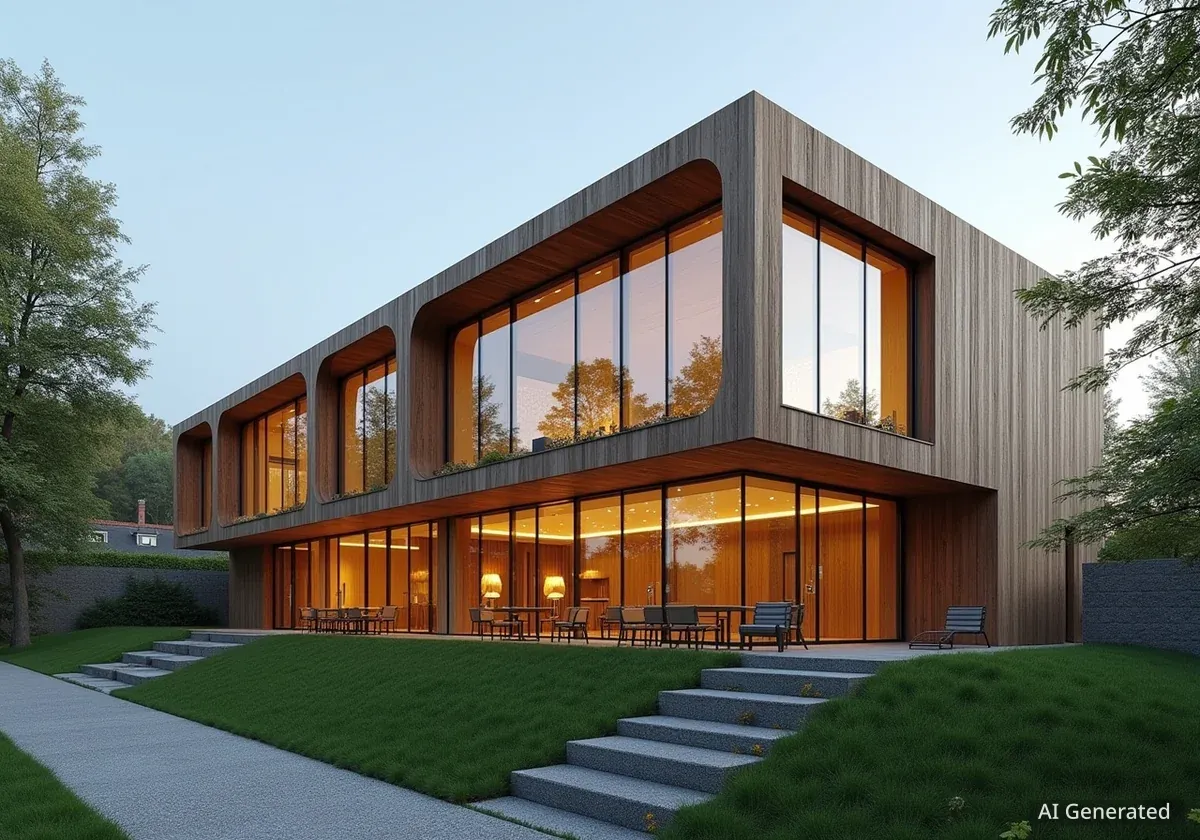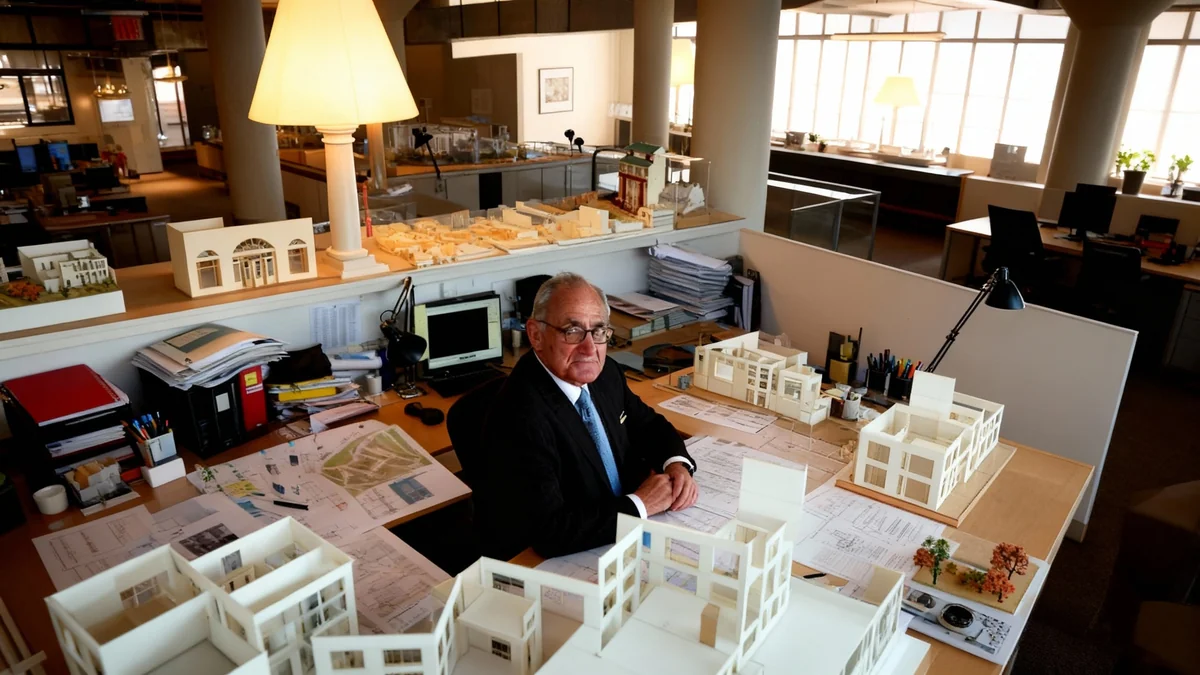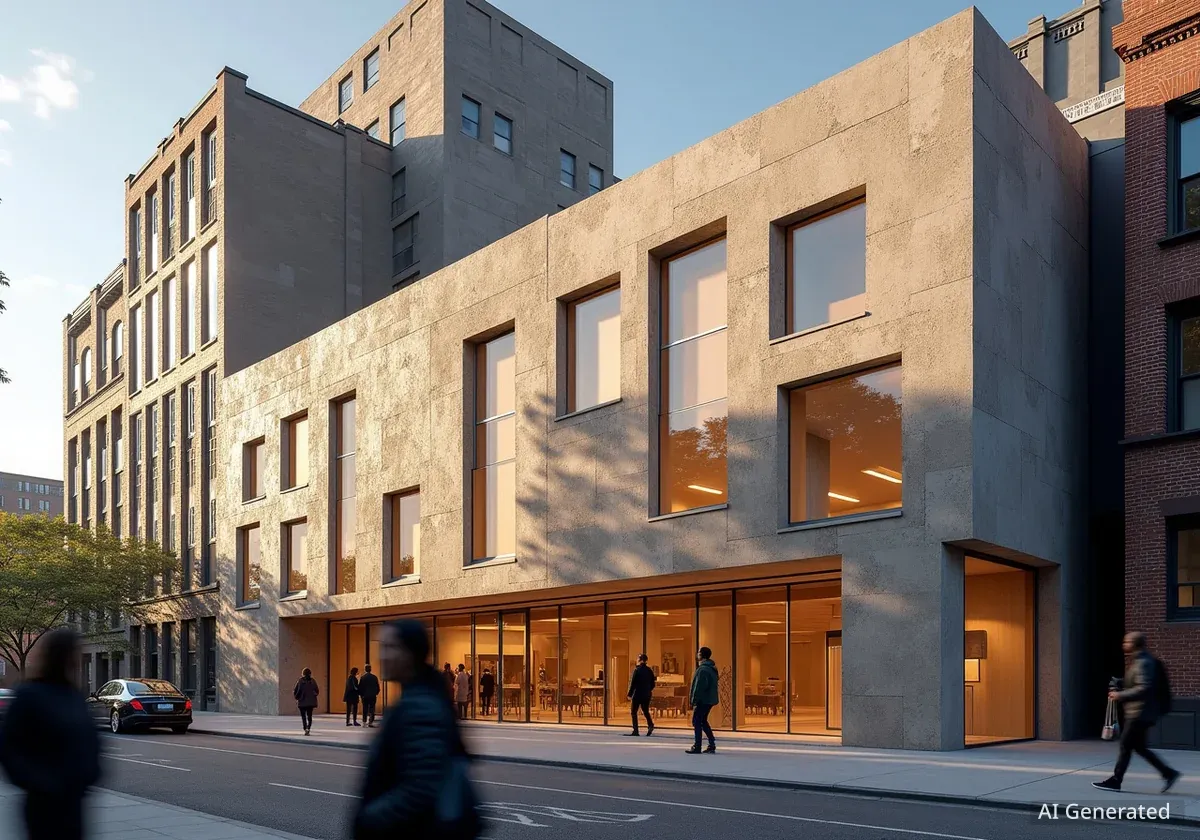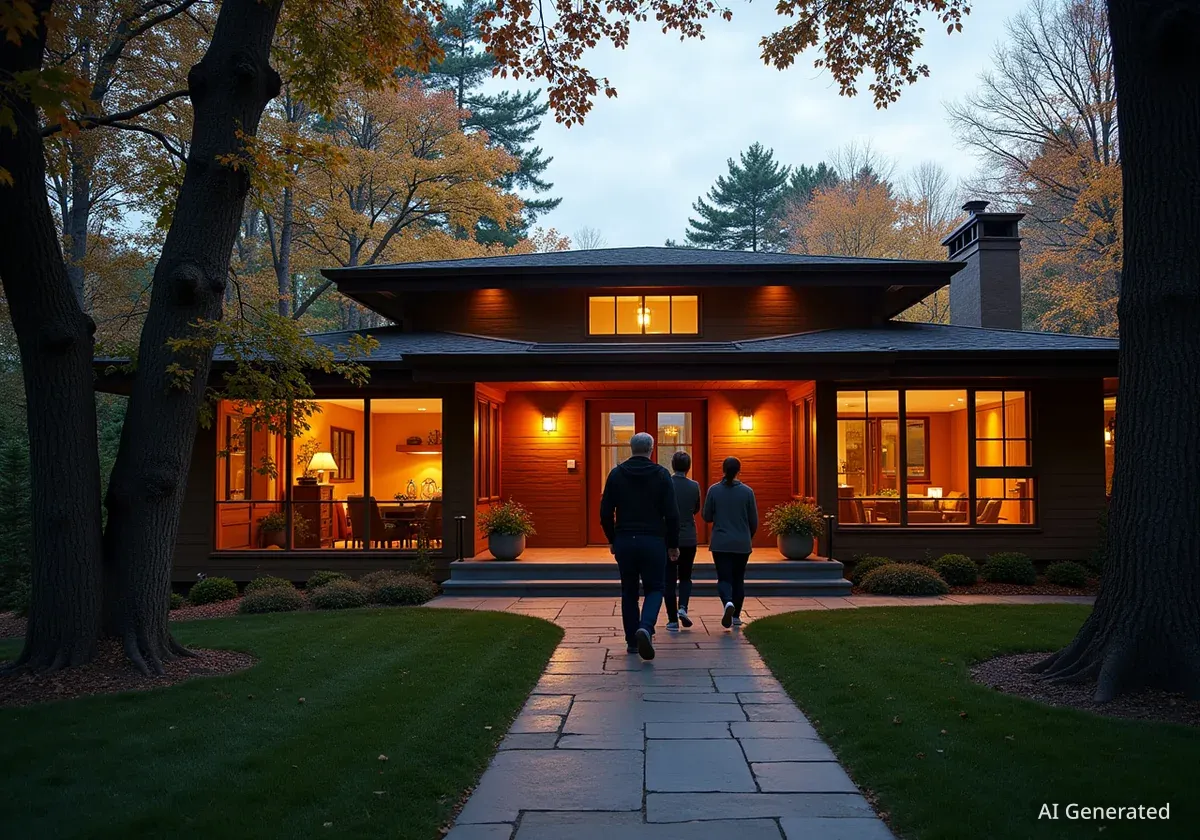The new Hortus office building in Allschwil, Switzerland, is setting a benchmark for sustainable construction. Designed by Herzog & de Meuron, this facility for the Switzerland Innovation Park focuses on renewable and recyclable materials, aiming to offset its construction energy within 31 years. It provides a modern and flexible workspace for life sciences companies in the Basel region.
Key Takeaways
- Hortus is designed with a radical sustainability approach, using renewable and recyclable materials.
- The building features a unique timber-frame structure with rammed-earth ceilings.
- It aims to be energy-positive, generating surplus energy from its 5,000 square meter photovoltaic system.
- The project includes a green atrium, a public restaurant, and a gym, fostering community.
- All construction components are cataloged for future reuse, following a 'cradle-to-cradle' principle.
Innovative Design for Environmental Impact
The client, Senn, commissioned Herzog & de Meuron to create an office building with the lowest possible grey energy during construction. The design also prioritizes energy optimization during operation and aims for a surplus of self-generated energy. This holistic approach makes Hortus one of the most sustainable office buildings in the German-speaking world.
According to the architects, the building, which accommodates around 600 workplaces, will fully offset the energy used during its construction within 31 years. This long-term energy amortization plan highlights the project's commitment to environmental responsibility from its inception.
Project at a Glance
- Location: Allschwil, Switzerland
- Architects: Herzog & de Meuron
- Area: 14,100 m²
- Completion Year: 2025
- Workplaces: Approximately 600
A Green Oasis for Collaboration
The Hortus building features a central green atrium, serving as a recreational area for employees and visitors. The building itself is a four-story timber-frame structure with rammed-earth ceilings, appearing to float slightly above the ground on stilts. A wide passageway on the south side leads to a garden designed by landscape architect Piet Oudolf.
This garden incorporates tall shrubs, grasses, flowering perennials, and climbing plants on the courtyard façades, creating dense greenery. Beneath the garden, a rainwater collection tank gathers water for irrigating plants and for the building's sanitary facilities. The atrium also includes a covered wooden veranda, offering a natural space for breaks and informal meetings.
"Hortus stands for maximum ecological sustainability - the claim can hardly be extended any further. The architecture follows the Lego principle: all elements are modular. They can be completely disassembled and either returned to nature or reused for other buildings."
— Stefan Marbach, Senior Partner, Herzog & de Meuron
Public Amenities and Flexible Workspaces
The ground floor of Hortus is designed to be accessible to the public. It includes a restaurant, a gym with a café bar, and various seating niches. Additionally, several meeting rooms are available for external parties to rent, fostering a sense of community and openness.
The four upper floors provide approximately 10,000 square meters of office space. These open-plan layouts are designed to encourage employee engagement and exchange. Teams have access to flexible seating areas of various sizes, both indoors and on the verandas. Some areas are shared, promoting inter-company collaboration. Each floor also features communal lounges and kitchenettes.
Materials Chosen for Circularity
The name HORTUS stands for House of Research, Technology, Utopia, and Sustainability. The project emphasizes innovative sustainability concepts. The design process began with a detailed scientific analysis of materials, evaluating their environmental and physical characteristics. A primary criterion was that materials be naturally sourced and renewable.
Following the "cradle-to-cradle" principle, all building components were meticulously cataloged for potential future reuse. For example, the clay from the ceiling modules can be directly returned to the ground at the end of the building's lifespan. The limited palette of renewable materials, including wood, compressed clay, and cellulose, underscores the ecological principles guiding Hortus's modular timber-frame construction.
Cradle-to-Cradle Principle
The "cradle-to-cradle" concept is a design philosophy that aims to eliminate waste by designing products and systems in a way that all materials can be reused indefinitely. Unlike "cradle-to-grave" which implies disposal, this approach ensures materials circulate in closed loops, either as biological nutrients that return to the earth or technical nutrients that remain in industrial cycles.
Timber joinery was used to avoid metal connections. This design choice ensures that components can be easily disassembled and reused when the building reaches the end of its initial use.
A Groundbreaking Hybrid Floor System
In collaboration with ZPF Ingenieure, the architects developed a unique hybrid floor system. This system combines rectangular timber elements with compressed clay. The ceiling modules were further refined with the help of Blumer Lehmann and Lehm Ton Erde.
Each hybrid element consists of a prefabricated wooden frame, made from timber harvested from nearby forests. Clay is compressed into a vault shape between the inlaid wooden beams of the frame. This dense clay provides essential fire protection and acts as a thermal mass during summer, absorbing excess heat to regulate indoor temperatures.
Sustainable Material Facts
- Local timber from nearby forests
- Clay excavated directly from the construction site
- Carbon emissions of clay-timber floor system are ten times less than conventional concrete.
The floor slabs were produced locally, with clay excavated directly from the construction site. Each slab was manufactured in a field factory located next to the building. A specialized process developed by Lehm Ton Erde allowed the clay mixture to be produced and tamped into the wooden modules on site. This innovative clay-timber floor system significantly reduces carbon emissions, being ten times less impactful than a conventional flat concrete floor with similar load capacity.
Energy Positive and Carbon Reduction Goals
The Hortus design aims for a drastic reduction in the building's carbon footprint through a comprehensive sustainability concept. It exceeds the standards set by environmentally sustainable building guidelines, such as SIA 2040. The compact form of the building helps minimize energy loss.
Without a traditional concrete basement, the building effectively "floats" over the landscape. The air circulating beneath the structure remains cool in summer and warm in winter. This natural insulation, combined with geothermal energy for heating and cooling, helps regulate room temperature efficiently.
A significant photovoltaic surface, covering approximately 5,000 square meters, is installed on the roof and along the parapets. This system generates renewable solar energy, producing a surplus from day one. This energy surplus is key to achieving the goal of fully amortizing the embodied energy from construction within 31 years.
"We need to think anew: sustainability should be at the forefront of everything we produce - indeed, everything we do. This will result in unexpected and surprising architecture with a beauty of its own."
— Jacques Herzog, Herzog & de Meuron
Sustainability as a Core Architectural Challenge
Herzog & de Meuron views sustainability as a fundamental challenge for the construction industry. Their approach emphasizes a holistic balance of environmental, economic, and socio-cultural conditions in the built environment. Studies by the IEA (International Energy Agency) and the WEF (World Economic Forum) indicate that the construction sector accounts for about 40 percent of global raw material and energy consumption, making it a major producer of carbon emissions.
Architects see it as their duty to address these statistics. The question of how to design climate-neutral buildings requires not only sound environmental principles but also an ongoing commitment to finding the best solutions for each specific context. This demands high levels of innovation and solution-oriented design, tailored to geographic, urban, and cultural factors.
The Hortus project exemplifies that sustainable architecture can serve as a local source of energy and raw materials. It also demonstrates that such architecture can be aesthetically pleasing, healthy for both construction and occupation, and beneficial for the economy, the environment, and society as a whole.
"Hortus has shown how radical sustainability in architecture is possible in order to create an attractive place focusing on the well-being of people."
— Alexander Franz, Lead Sustainability, Herzog & de Meuron
The project led to the formation of an internal Herzog & de Meuron Sustainability Team. This team integrates sustainability into the early stages of the design process. They use conceptual thinking, experience, and digital tools to inform decision-making. The goal is to apply the expertise gained from Hortus to future projects, contributing to climate protection and resource conservation globally.




